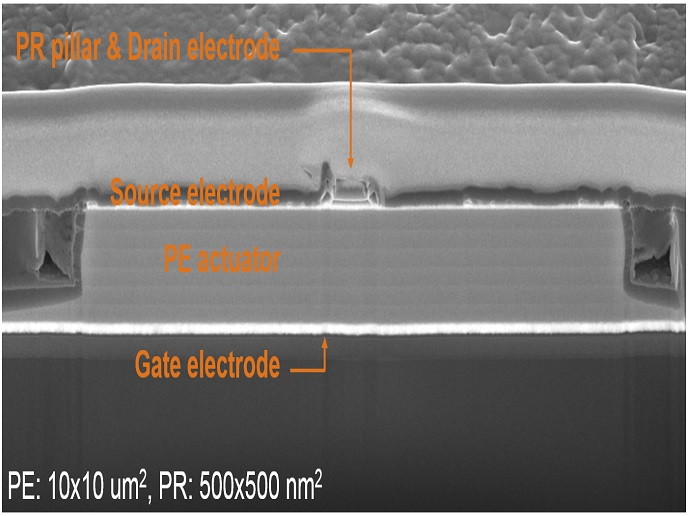Tiny piezoelectronic device accelerates CMOS chips
Computer users have become accustomed to each new chip generation being faster than the previous. Speed gains result from reductions in the size of complementary metal-oxide-semiconductor (CMOS) memory chips, central to all computers and computer-based devices. With decreasing size, voltages also decrease, allowing faster transistor switching. Yet, below a certain size, quantum effects start to apply. CMOS chips become increasingly energy inefficient. Speed gains would require more electrical power, making the devices expensive to operate. Thus, the exponential increase in chip speeds that defined the entire microchip era ended around 2003. Apparent performance gains since then have resulted from increased transistor density and multiple processor cores, rather than from genuine speed improvements. The electronics industry needs a new CMOS transistor technology, and the EU-funded PETMEM (Piezoelectronic Transduction Memory Device) project undertook efforts to develop it. The resulting alternative, called a piezoelectronic transduction (PET) transistor, is predicted to be faster and more energy efficient than conventional CMOS transistor alternatives.
New transistor
The PET transistor is a new type of electronic switch that works according to the piezoelectric effect. Essentially, when a suitable material is squeezed, it produces electricity; in reverse, applying electricity to that material changes its shape, producing a mechanical effect. The PET transistor utilises this effect in both directions, using two materials bonded together. First, the device converts an electronic signal to a sound (pressure) wave. The pressure compresses a piezoresistive material, and the compression switches the material’s electrical resistance on and off. Considering the device as a whole, connecting or disconnecting a voltage activates the switch. How much voltage depends on the materials’ piezoelectric properties. Certain materials developed in recent years require very low voltages. Low voltage means fast switching speed. As project coordinator Nick Chadwick explains: “If we clamp the whole sandwich together and shrink all the dimensions, we can realise a tiny 100-nanometre–size electronic switch.”
High-performance switching
A transistor that small should be able to switch 10 billion times per second. This would result in 10 GHz devices after the project’s next phase of technology development. The first industrial clients will probably be the telecommunications sector. Mobile communications devices need fast, low-power switches to realise the full potential of 5G services. PET is able to provide the necessary performance. In the longer term, computer chips need very low power on processor memory, which again the PET would be able to provide. “At the beginning, we lacked facilities for production, a mature process flow and testing tools. So we had to develop all that first, and then the PET transistor,” says Chadwick. The team expects the first working demonstrators to be finalised during 2020. Once the prototypes are complete, the team will be able to proceed to full commercial evaluation for mobile telecommunications applications. Then, the group will explore possibilities of working with larger labs, and funding options, to co-develop the technology. As a result of the PETMEM project and its new CMOS device, the blockage to faster chip speeds will have been removed. Electronic devices will again speed up.
Keywords
PETMEM, transistor, CMOS, computer, piezoelectric, PET transistor, memory chip, piezoelectronic transduction







